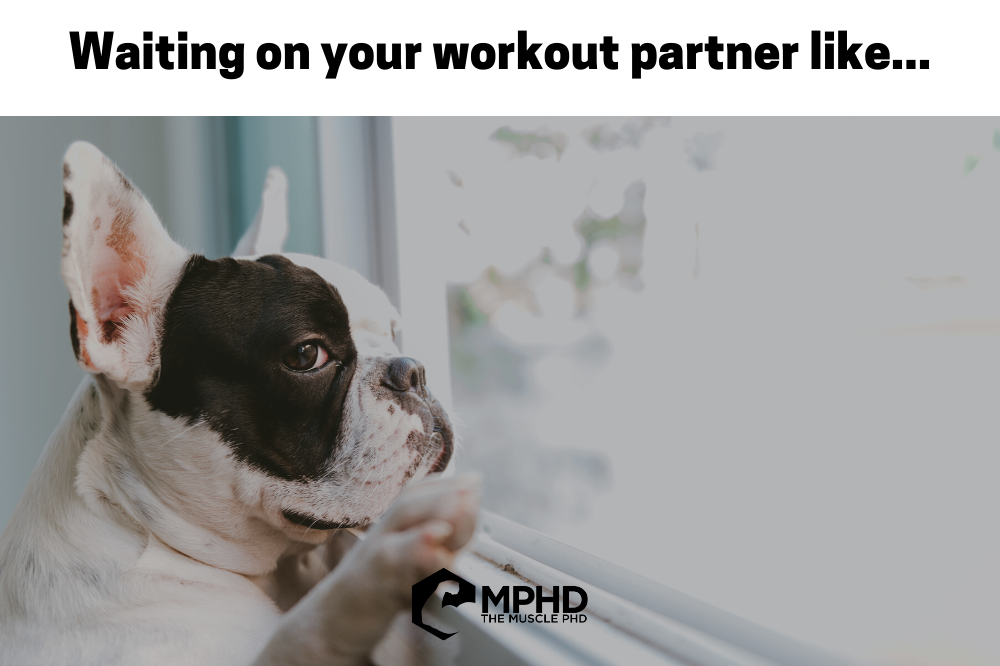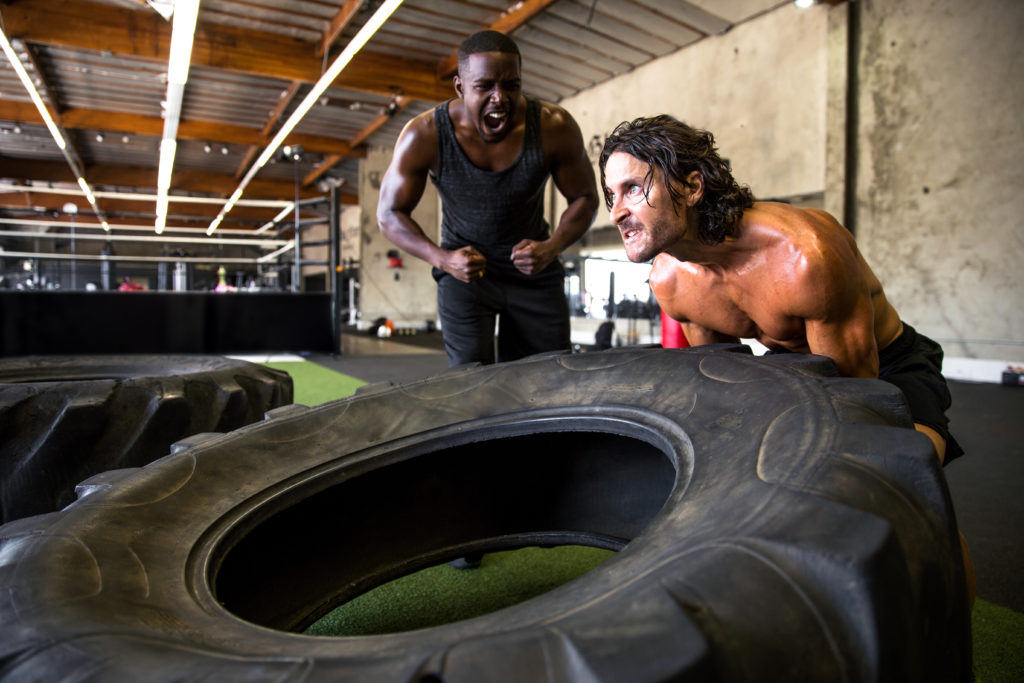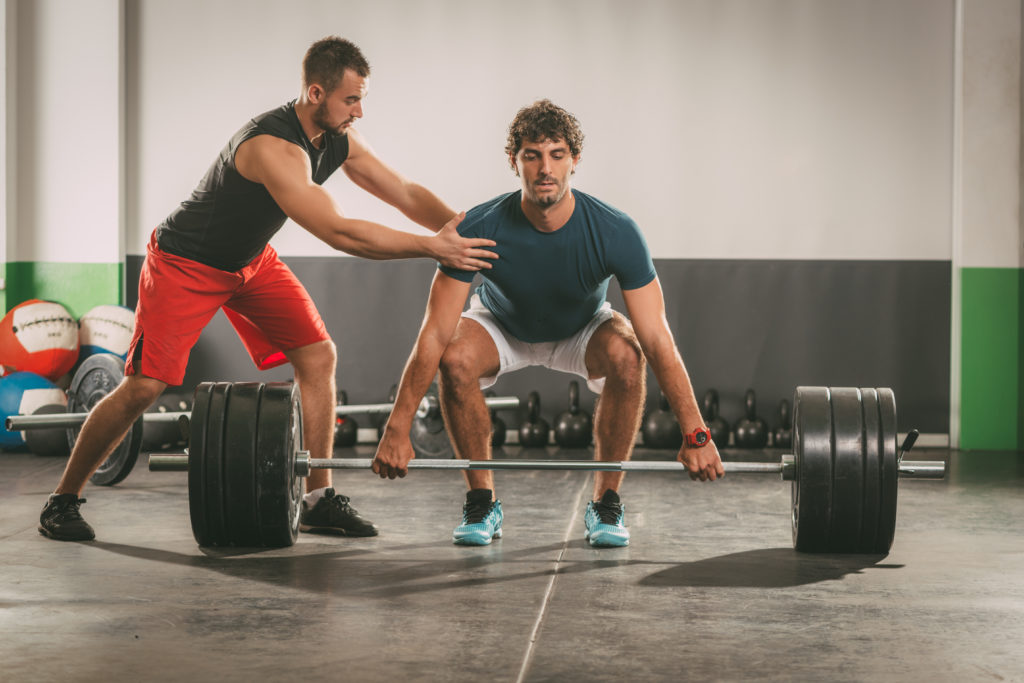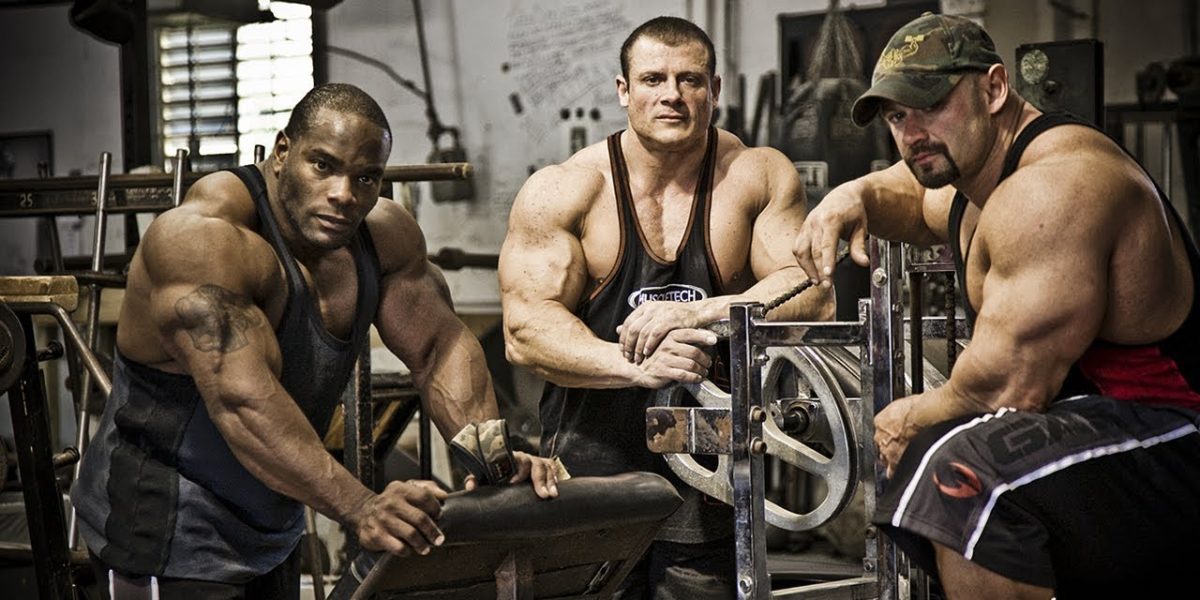Introduction
When it comes to being a good training partner, some people just don’t get it. The Golden Rule of treating others how you wish to be treated applies very well in just about all situations – and being a good training partner is no different. Be the kind of training partner that you would want to have! Unfortunately, that’s still not specific enough to many people, so let’s go over an additional set of rules that can help you become a better training partner.
Rule #1: Be on Time
 Not all of these are necessarily in order of importance, but I do think that being punctual is probably the most important rule. Unfortunately, people often take punctuality for granted until it becomes an issue (8) – i.e. no one will probably ever thank you for being on time, but you’ll definitely hear about it when you’re late.
Not all of these are necessarily in order of importance, but I do think that being punctual is probably the most important rule. Unfortunately, people often take punctuality for granted until it becomes an issue (8) – i.e. no one will probably ever thank you for being on time, but you’ll definitely hear about it when you’re late.
Really, this one is simple. If your workout is at 5:30, be at the gym at 5:30. If I’m your training partner and you’re not there at 5:30, I’m starting without you. And you can figure out how you’re going to work in – I’m not taking weight off of the bar so you can warm up when you finally show up at 5:54.
If you want to show your gym partner that you don’t value their time or patience, show up late. Everyone has a busy schedule and everyone has things come up from time-to-time. If something gets in your way – shoot your partner a text and let them know you’ll be late; AND – let them know it’s okay to start without you and that you’ll work in when you get there!
It’s really not hard, people. Be reliable and be on time. I could forgive transgression of just about every other rule on this list as long as you show up on time. It’s literally the easiest step.
Rule #2: Limit your Stench Production
Odds are, unless you workout with your romantic partner, you probably don’t much appreciate your training partner’s gym stank (5). And, mind you, stink would refer to both body odor stemming from perspiration and odor leaking from, uh, the primary crevice in the lower half of the body. In simple terms, be generous with your deodorant and get your farts out in the car on the way to the gym.
I understand that, at the end of the day, nobody has a particularly pleasant body odor when they’re sweating like a pig. But, applying deodorant, using a SMALL amount of body spray, and wearing clean clothes can all limit the impact that your stench has on your partner – not to mention the other gym goers or pieces of equipment that you’re wiping your sweaty keister all over.
Lastly, this also goes for stinky breath. There are not many things I can think of that are more disgusting than when you’re spotting someone on bench and they have straight up dirty dog breath. Every forced exhale gets airmailed straight to your olfactory receptors. This component goes two ways – keep your breath fresh and keep gum on hand to offer to your gym partner when they’ve got landfill mouth going on.
Rule #3: Motivate your Partner
 This one kinda goes without saying, but this can be the rule that separates the good training partner from the great training partner. Now, we know that motivation is, essentially, a psychological phenomenon. But psychology can certainly influence physiology – if you get someone pumped up and get their adrenaline going, it’s very possible that their performance will improve.
This one kinda goes without saying, but this can be the rule that separates the good training partner from the great training partner. Now, we know that motivation is, essentially, a psychological phenomenon. But psychology can certainly influence physiology – if you get someone pumped up and get their adrenaline going, it’s very possible that their performance will improve.
In fact, we even have studies showing that subjects who were on placebo pills, but were told they were taking steroids, made massive gains (2,6). The best part is that when some of the subjects in one study were told the truth, they immediately stopped making gains whereas the other subjects continued making fantastic progress thanks to their naivety (6). In these instances, psychology can actually trump physiology.
Now, this isn’t suggesting that you need to find some sugar pills to shove down your partner’s throat while you coat their ears with lies about steroids, but keeping them amped up and motivated (and confident) can go a long way in helping them make better gains. In turn, this method ramps up the intensity of a training session and will likely get you motivated to work harder, too. A win-win!
Rule #4: Always Help Load and Unload the Bar
If you see your partner changing weights, step in and help. I don’t care if you’re gasping for air or even projectile vomiting; if they helped you put your weights on, help them do the same. A good gym partner understands that the minute his/her set is over, it’s time for their partner’s set. Help them get the most out of their set, and expect the same assistance in return. In addition, be very clear about what weight you want on the bar when it’s time for your set. No one wants to stand around while you scratch your chin and do inaccurate barbell math. Have a goal for each set when you start an exercise and pay attention to your body as you move through a workout.
Rule #5: Always be Hungry for a Post-Workout Meal
Okay, okay, so yes, the whole “anabolic window” thing is pretty controversial these days. However, we know that trained individuals likely have a smaller anabolic window than newbies (9), so having an appetite for a great post-workout meal is never a bad thing. The post-workout time period is still a great time to get a good chunk of nutrients in (1,4) – even if the anabolic window is a few hours, rather than 30-minutes, there’s nothing wrong about eating ASAP after your workout. Plus, with this strategy, you spend more overall time recovering.
With just about every training partner I’ve ever had (including my wife), about halfway through our workout, we begin discussing what we want to eat after training. In college and graduate school, this was typically something absolutely filthy like Panda Express or Steak n’ Shake. Nowadays, on the rare occasion that my wife and I get to train together, we hit the all-you-can-eat sushi and hibachi joint down the street. I am quite certain that if my hunger were to be lacking following a workout, my wife would consider divorcing me.
Stay hungry, friends.
Rule #6: Be A Coach
A great training partner is also usually a great coach. They let you know when your form is breaking down, they help you decide which exercises to hit that day, and they even give cues while you lift to ensure you’re getting the most out of that exercise. These cues and coaching tips can increase muscle activation (3,7) to help your partner get the most bang for their buck out of each lift.
 On the flip side of things, you also have to be willing to be coached. If you’re coaching your partner during their set, you should be receptive to what they say during yours – unless it’s stupid advice, of course. Like I mentioned previously, my main training partner these days is my wife. I have coached her in the past and occasionally continue to do so – mainly form checks, helping her plan workouts, etc. Coaching her through an entire training/nutrition program isn’t the best thing for a healthy marriage. However, while she is a phenomenal strength athlete, she doesn’t have quite as much training knowledge or experience as I do. Regardless, she occasionally cues me while I’m training and gives me feedback between sets. My ego typically wants to disregard what she has to say, but when I listen, my workout gets a lot better.
On the flip side of things, you also have to be willing to be coached. If you’re coaching your partner during their set, you should be receptive to what they say during yours – unless it’s stupid advice, of course. Like I mentioned previously, my main training partner these days is my wife. I have coached her in the past and occasionally continue to do so – mainly form checks, helping her plan workouts, etc. Coaching her through an entire training/nutrition program isn’t the best thing for a healthy marriage. However, while she is a phenomenal strength athlete, she doesn’t have quite as much training knowledge or experience as I do. Regardless, she occasionally cues me while I’m training and gives me feedback between sets. My ego typically wants to disregard what she has to say, but when I listen, my workout gets a lot better.
Therefore, unless your workout partner is a complete baboon, be a coach AND be coachable! Besides being on time, the most important thing for training partners is to make each other better.
Rule #7: Always be Honest
This goes hand-in-hand with being a coach. As a coach, honesty is the best policy. Now, this isn’t just being honest with your partner about their form, etc. but, rather, their effort. If your partner is in any way serious about being a competitive bodybuilder, powerlifter, etc. you need to do your best to keep them on track. Is your partner dragging ass during a workout? Let them know. Have you noticed that your partner isn’t keeping up on their nutrition? Let them know. If your partner is slowly killing their progress by not maintaining dedication and you’re doing nothing to help, then you’re an accessory to this murder.
This rule obviously gets much harder if your training partner is your significant other. If this is the case, make sure you know each other’s goals and become “accountabilibuddies.” Criticism in relationships is a very rough road to venture down, but when you’re being accountable for each other and expecting the best of your partner, your travels become a little easier.
At the end of the day, you’re the first form of feedback that your gym partner has (besides their own body, of course). Let them know what you’re seeing. Keep them accountable for their work and be honest when you see effort and/or dedication dwindling. Even if neither of you is aspiring to be a competitor in some sort of strength sport, honesty is always a great policy in training partnerships.
Rule #8: Don’t Let your Partner Skip Leg Day
No further details needed. Do your squats and deadlifts.
Conclusion
Hopefully you’re already doing all of the things on this list, and if not, give them a shot. Especially the hunger one. Regardless, now it’s time to get your training partner to read this article. That’s not passive-aggressive at all, right? Have fun with that conversation.
References
- Aragon, A. A., & Schoenfeld, B. J. (2013). Nutrient timing revisited: is there a post-exercise anabolic window? Journal of the International Society of Sports Nutrition, 10(1), 5.
- Ariel, G., & Saville, W. (1972). Anabolic steroids: the physiological effects of placebos. Medicine and Science in Sports, 4(2), 124-126.
- Calatayud, J., Vinstrup, J., Jakobsen, M. D., Sundstrup, E., Brandt, M., Jay, K., … & Andersen, L. L. (2016). Importance of mind-muscle connection during progressive resistance training. European Journal of Applied Physiology, 116(3), 527-533.
- Kerksick, C. M., Arent, S., Schoenfeld, B. J., Stout, J. R., Campbell, B., Wilborn, C. D., … & Willoughby, D. (2017). International society of sports nutrition position stand: nutrient timing. Journal of the International Society of Sports Nutrition, 14(1).
- Lundström, J. N., & Olsson, M. J. (2010). Functional neuronal processing of human body odors. In Vitamins & Hormones (Vol. 83, pp. 1-23). Academic Press. Cambridge, MA.
- Maganaris, C. N., Collins, D., & Sharp, M. (2000). Expectancy effects and strength training: do steroids make a difference? The Sport Psychologist, 14(3), 272-278.
- Schoenfeld, B. J., & Contreras, B. (2016). Attentional focus for maximizing muscle development: The mind-muscle connection. Strength & Conditioning Journal, 38(1), 27-29.
- Scott, G. (2015). Are we all on the same page? Teacher, graduate and student perceptions of the importance of skills thought to enhance employability. Journal of Learning Development in Higher Education, (8).
- Tang, J. E., Perco, J. G., Moore, D. R., Wilkinson, S. B., & Phillips, S. M. (2008). Resistance training alters the response of fed state mixed muscle protein synthesis in young men. American Journal of Physiology-Regulatory, Integrative and Comparative Physiology, 294(1), R172-R178.
From being a mediocre athlete, to professional powerlifter and strength coach, and now to researcher and writer, Charlie combines education and experience in the effort to help Bridge the Gap Between Science and Application. Charlie performs double duty by being the Content Manager for The Muscle PhD as well as the Director of Human Performance at the Applied Science and Performance Institute in Tampa, FL. To appease the nerds, Charlie is a PhD candidate in Human Performance with a master’s degree in Kinesiology and a bachelor’s degree in Exercise Science. For more alphabet soup, Charlie is also a Certified Strength and Conditioning Specialist (CSCS), an ACSM-certified Exercise Physiologist (ACSM-EP), and a USA Weightlifting-certified performance coach (USAW).




